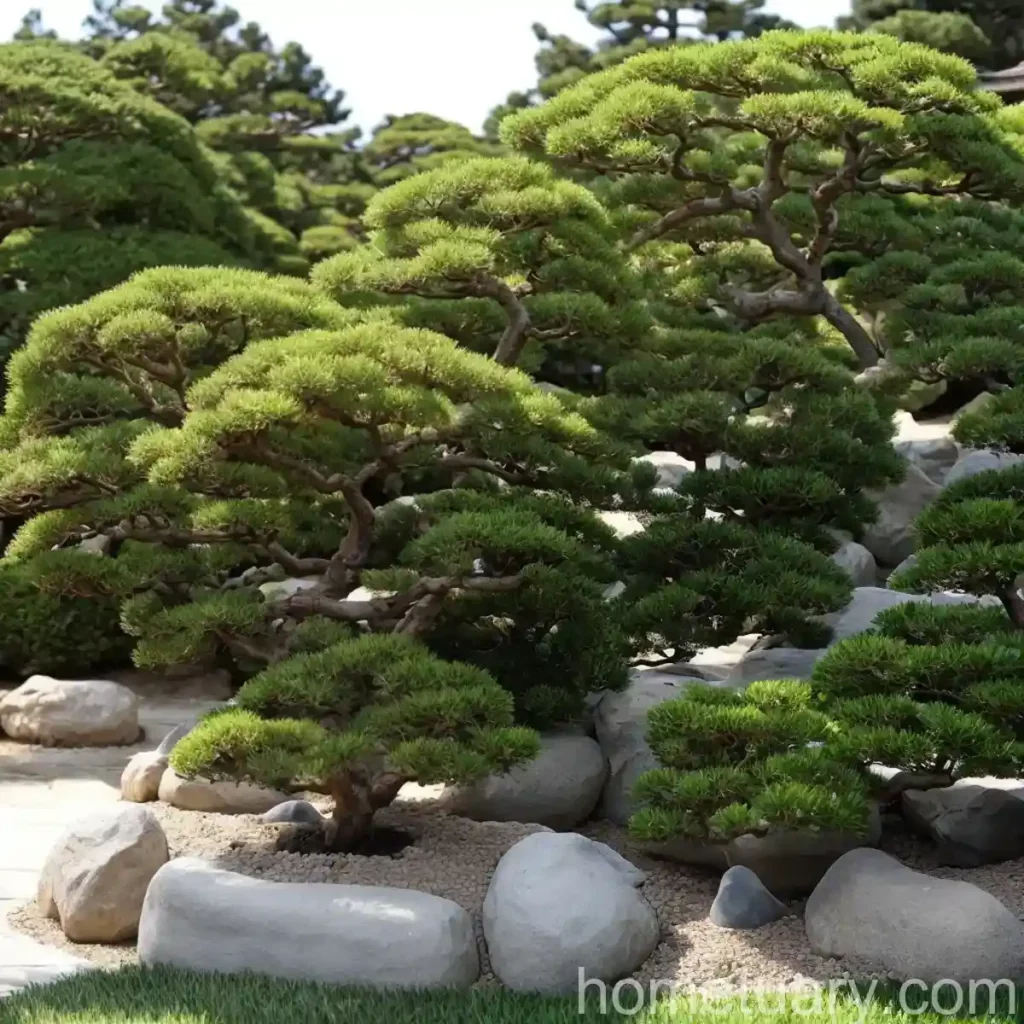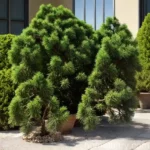Japanese Garden Juniper (Juniperus procumbens ‘Nana’)
As a plant scientist, I am excited to dive into the world of the Japanese garden juniper (Juniperus procumbens ‘Nana’). This versatile and beautiful plant is a staple in many landscapes and gardens, and for good reason. In this comprehensive guide, we will explore the culture, uses, maintenance, and interesting facts about the Japanese garden juniper. So let’s dig in and discover the wonders of this remarkable plant.
What is a Plant?
Before delving into the specifics of the Japanese garden juniper, let’s take a moment to appreciate the broader concept of plants. Plants are living organisms belonging to the kingdom Plantae. They are autotrophic, meaning they are capable of producing their own food through the process of photosynthesis. This key process involves the absorption of light energy, usually from the sun, and the conversion of carbon dioxide and water into organic compounds, such as sugars, that the plant uses as a source of energy.
Plants play a crucial role in our ecosystem, serving as the primary producers and forming the foundation of many food chains. Additionally, they contribute to the oxygen cycle by releasing oxygen as a byproduct of photosynthesis. From towering trees to delicate flowers, the diversity of the plant kingdom is both astounding and essential for the sustenance of life on Earth.
Japanese Garden Juniper (Juniperus procumbens ‘Nana’)
The Japanese garden juniper, scientifically known as Juniperus procumbens ‘Nana’, is a captivating evergreen shrub that belongs to the cypress family, Cupressaceae. This species is native to Japan and is renowned for its low-growing, spreading habit and dense, lush foliage. ‘Nana’ denotes its dwarf form, making it an ideal choice for compact gardens, rockeries, and bonsai cultivation. Let’s explore the key takeaways for this exquisite plant, from its culture to maintenance tips.
Key Takeaways
Culture
The Japanese garden juniper thrives in a variety of settings, from traditional gardens to modern landscapes. Its attractive appearance and adaptability make it a popular choice among gardeners and landscapers.
Uses
- Ornamental Purposes: The lush, evergreen foliage and spreading habit of the Japanese garden juniper make it a striking ornamental plant in various garden styles, including Japanese, Zen, and rock gardens.
- Bonsai Cultivation: Due to its compact growth habit and visually appealing foliage, the ‘Nana’ variety is favored for bonsai creation, adding a touch of elegance to indoor and outdoor bonsai displays.
- Ground Cover: When planted en masse, the Japanese garden juniper can serve as an effective ground cover, providing year-round greenery and suppressing weed growth.
Water
The Japanese garden juniper demonstrates good drought tolerance once established. However, it is important to provide regular watering, especially during dry spells, to ensure its healthy growth and appearance.
Sunlight
This plant thrives in full sun to partial shade conditions. To promote optimal growth and foliage density, ensure that it receives ample sunlight throughout the day.
Fertilizer
The Japanese garden juniper benefits from a balanced, slow-release fertilizer applied in early spring. This helps provide essential nutrients for vigorous growth and maintains the plant’s overall health.
Soil
Well-draining, acidic to neutral soil is suitable for the Japanese garden juniper. It is important to avoid waterlogged or compacted soil to prevent root rot and other moisture-related issues.
Pruning
Regular pruning is beneficial for maintaining the desired shape and size of the Japanese garden juniper. It is often pruned in late winter to early spring before new growth emerges.
Propagation
The Japanese garden juniper can be propagated from semi-hardwood cuttings taken in summer. In addition, it can be propagated from seeds, though this method requires patience due to the plant’s slow initial growth.
Container Popularity
The ‘Nana’ variety’s compact nature makes it an excellent choice for container gardening, allowing individuals with limited outdoor space to enjoy its beauty on patios, balconies, and other confined areas.
Container Common Diseases
Container-grown Japanese garden junipers may be vulnerable to certain diseases, including root rot and fungal infections. Providing proper drainage and avoiding overwatering can help mitigate these issues.
Disease Diagnosis
Early detection and proper identification of plant diseases are important for effective management. Regular monitoring for symptoms such as yellowing foliage or unusual lesions can help identify potential issues promptly.
Common Pests
While the Japanese garden juniper is generally resistant to pests, occasional infestations by spider mites, aphids, or scale insects can occur. Vigilant inspection and prompt treatment can help prevent pest-related damage.
Botanist’s Tips
To ensure the thriving of the Japanese garden juniper, here are some botanist-approved tips:
- Monitor Soil Moisture: Regularly check the soil moisture level, especially during hot and dry periods, to provide adequate irrigation without waterlogging the plant.
- Prune Carefully: When pruning the Japanese garden juniper, use sharp and clean tools to make precise cuts, promoting faster healing and minimizing the risk of disease transmission.
- Implement Integrated Pest Management: Adopt an integrated approach to pest control, incorporating cultural, biological, and chemical methods as needed to maintain a balanced and healthy garden ecosystem.
Fun Facts
- In Japanese culture, the juniper tree is associated with longevity and strength, often planted near temples and shrines as a symbol of endurance and resilience.
- Certain species of juniper, including the Japanese garden juniper, are used in traditional herbal medicine for their purported health benefits, such as digestive support and as a natural diuretic.
Now that we have covered the essential aspects of the Japanese garden juniper, it’s time to explore some external resources that provide additional insights and information about this captivating plant.
Links to External Resources
Websites
By exploring these resources, you can gain valuable insights into various aspects of the Japanese garden juniper, including its cultivation, maintenance, and potential uses in different garden settings.
In conclusion, the Japanese garden juniper (Juniperus procumbens ‘Nana’) stands as an exceptional plant with its stunning appearance, versatility, and ease of care. Whether gracing a tranquil Japanese garden or serving as an elegant bonsai specimen, this resilient and captivating shrub continues to captivate enthusiasts and nature lovers alike. Embracing the cultural significance and horticultural charm of the Japanese garden juniper can enrich your gardening experience and foster an appreciation for the intricate beauty of this remarkable plant.
Keywords: Juniperus procumbens ‘Nana’ care, Japanese garden Juniperus procumbens, Juniperus procumbens ‘Nana’ characteristics, Juniperus procumbens ‘Nana’ pruning, Juniperus procumbens ‘Nana’ propagation, Growing Japanese garden juniper, Japanese garden juniper varieties, Juniperus procumbens ‘Nana’ landscaping, Juniperus procumbens ‘Nana’ bonsai, Japanese juniperus procumbens care, Juniperus procumbens ‘Nana’ planting guide, Japanese garden juniperus procumbens ‘Nana’ pruning tips, Juniperus procumbens ‘Nana’ growth habit, Maintaining Japanese garden juniperus procumbens, Juniperus procumbens ‘Nana’ disease resistance, Japanese garden juniperus procumbens ‘Nana’ indoor care, Juniperus procumbens ‘Nana’ landscape design, Tips for growing Japanese garden juniperus procumbens, Juniperus procumbens ‘Nana’ insect control, Japanese garden juniperus procumbens ‘Nana’ container gardening, Juniperus procumbens ‘Nana’ soil requirements, Japanese garden juniperus procumbens ‘Nana’ sunlight needs, Juniperus procumbens ‘Nana’ water requirements, Japanese garden juniperus procumbens ‘Nana’ hardiness zone, Juniperus procumbens ‘Nana’ common problems, Pruning techniques for Japanese garden juniperus procumbens, Juniperus procumbens ‘Nana’ foliage color, Japanese garden juniperus procumbens ‘Nana’ growth rate, Juniperus procumbens ‘Nana’ companion plants, Japanese garden juniperus procumbens ‘Nana’ landscape ideas, Juniperus procumbens ‘Nana’ rock garden, Japanese garden juniperus procumbens ‘Nana’ ground cover, Juniperus procumbens ‘Nana’ water conservation, Juniperus procumbens ‘Nana’ winter care, Japanese garden juniperus procumbens ‘Nana’ seasonal interest, Juniperus procumbens ‘Nana’ natural habitat, Japanese garden juniperus procumbens ‘Nana’ wildlife attraction, Juniperus procumbens ‘Nana’ root system, Japanese garden juniperus procumbens ‘Nana’ planting season, Juniperus procumbens ‘Nana’ cold tolerance, Japanese garden juniperus procumbens ‘Nana’ drought resistance, Juniperus procumbens ‘Nana’ soundproofing, Japanese garden juniperus procumbens ‘Nana’ air purification, Juniperus procumbens ‘Nana’ medicinal uses, Japanese garden juniperus procumbens ‘Nana’ sensory appeal, Juniperus procumbens ‘Nana’ maintenance tips, Japanese garden juniperus procumbens ‘Nana’ fragrant foliage, Juniperus procumbens ‘Nana’ natural pest control, Japanese garden juniperus procumbens ‘Nana’ privacy screen, Juniperus procumbens ‘Nana’ family tree















